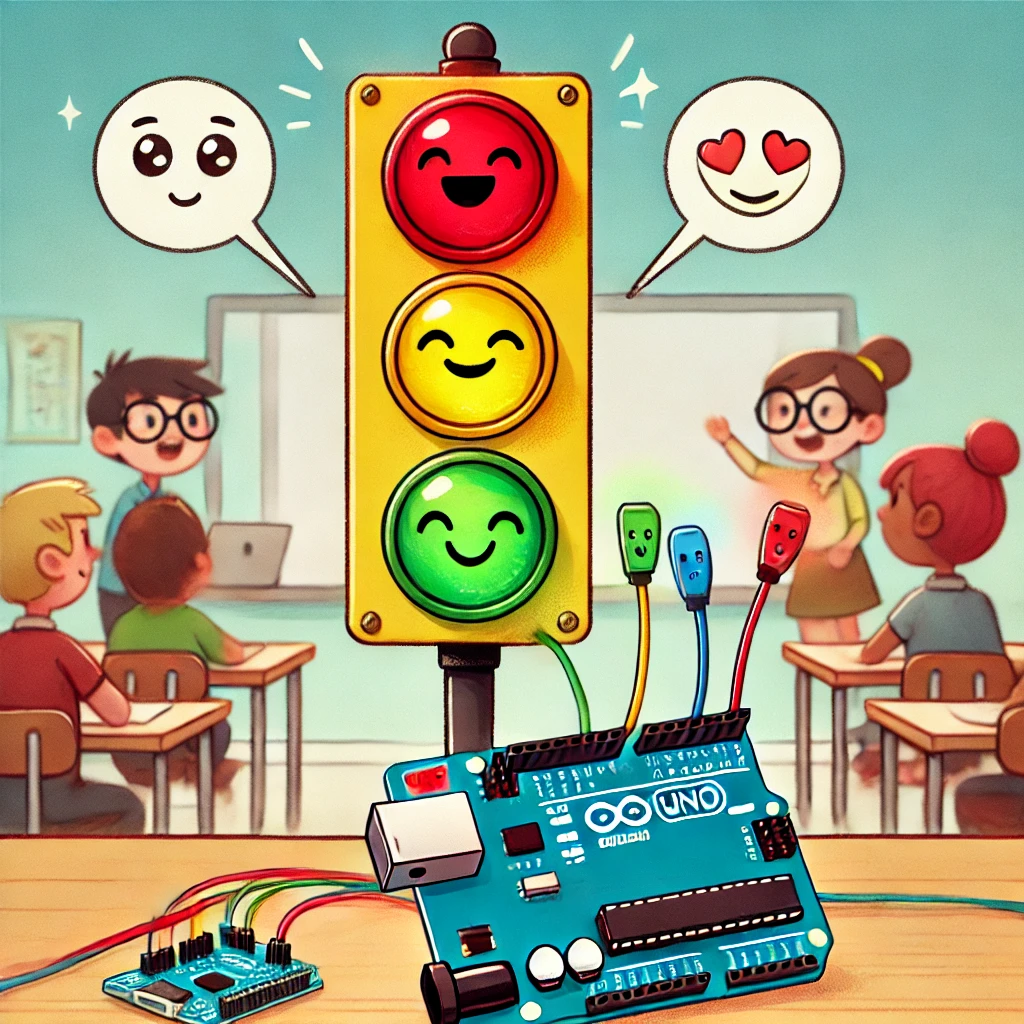In the ever-evolving landscape of science education, integrating technology into pedagogy can enhance student engagement and facilitate real-time assessment of comprehension. Utilizing microcontrollers like Arduino presents an opportunity to develop dynamic classroom tools that support evidence-based instructional strategies. The ELEGOO UNO Project Super Starter Kit—which includes an UNO R3 board, 5V relay, power supply module, servo motor, prototype expansion board, and more—offers an excellent platform for implementing such innovations.
For this project, I am leveraging the ELEGOO UNO kit to construct a real-time classroom feedback system that employs a traffic light model to visually represent student comprehension levels. This system will aggregate student responses and dynamically adjust the LED display to indicate the class’s collective understanding:
- Red: “Significant difficulty—concepts are unclear.”
- Yellow: “Partial understanding—some confusion remains.”
- Green: “Confident comprehension—ready to proceed.”
Conceptual Framework and Implementation
This project aligns with formative assessment principles by offering instructors immediate insight into student understanding, allowing for timely pedagogical adjustments. The traffic light system serves as a non-disruptive, low-stakes assessment tool that can be implemented across diverse learning environments.
Materials and System Components
The ELEGOO UNO kit provides most of the necessary hardware, including:
- UNO R3 Microcontroller – Serves as the central processing unit.
- RGB LED Module or Discrete LEDs (Red, Yellow, Green) – Provides visual feedback.
- Resistors (220Ω or 330Ω) – Ensures appropriate current regulation.
- Input Interface (Push Buttons, Web-Based Form, or Bluetooth Module) – Captures student feedback.
- Breadboard & Jumper Wires – Facilitates modular prototyping.
- 9V Battery & Power Supply Module – Ensures autonomous operation.
System Design and Algorithmic Processing
- Hardware Setup:
- Connect LEDs to the designated Arduino digital pins with appropriate resistors.
- Use a breadboard for modular connectivity and ease of iteration.
- Data Collection Methodology:
- Implement a student polling mechanism via physical push buttons, mobile form submissions, or IoT-enabled inputs.
- Aggregate responses in real time, computing a mean score to represent class-wide comprehension.
- Decision Algorithm:
- Low comprehension (0-3 range): Activate the Red LED.
- Moderate comprehension (4-6 range): Activate the Yellow LED.
- High comprehension (7-10 range): Activate the Green LED.
- Arduino Program Development:
- Develop a script in the Arduino IDE that processes input data, calculates the mean, and dynamically adjusts the LED output.
Pedagogical Implications and Future Development
This system provides an empirical approach to classroom assessment, fostering an adaptive learning environment where instructional pacing is responsive to real-time student needs. Future iterations of this project may include:
- Integration with Machine Learning Algorithms to predict trends in student comprehension over time.
- Bluetooth or Wi-Fi Connectivity for seamless mobile device input.
- LCD Display or Web-Based Dashboard to visualize data trends beyond a simple three-tier system.
- Incorporation of Physiological Sensors (e.g., galvanic skin response) to explore correlations between cognitive load and comprehension self-reporting.
The ELEGOO UNO Super Starter Kit provides a robust foundation for scientific inquiry into classroom assessment models. By leveraging computational tools in educational research, we can refine and develop new methodologies that enhance student engagement and learning outcomes.
What are your thoughts on integrating real-time feedback systems in science education? Share your insights and experiences below!

Leave a Reply